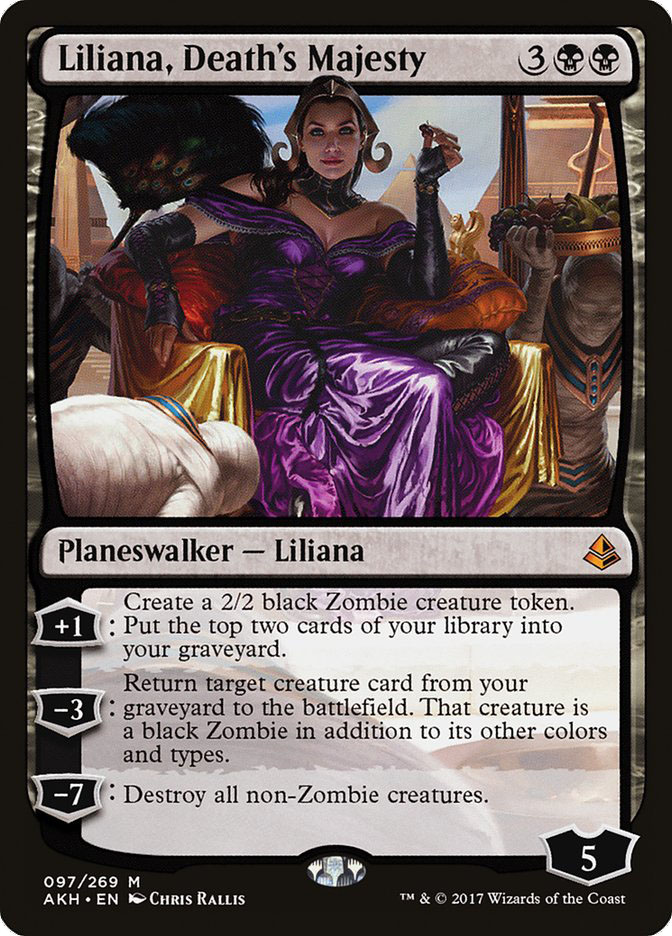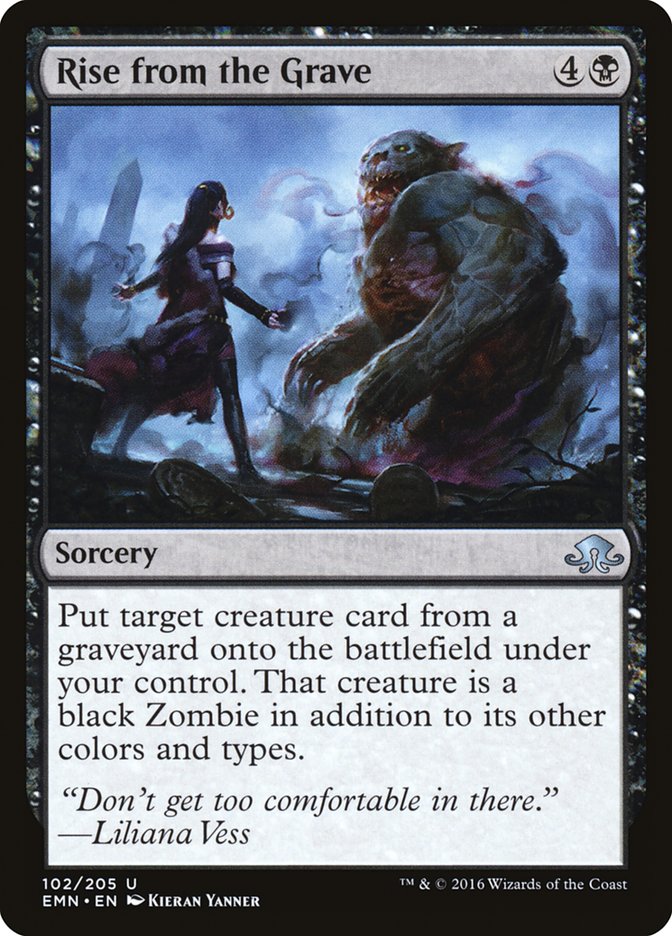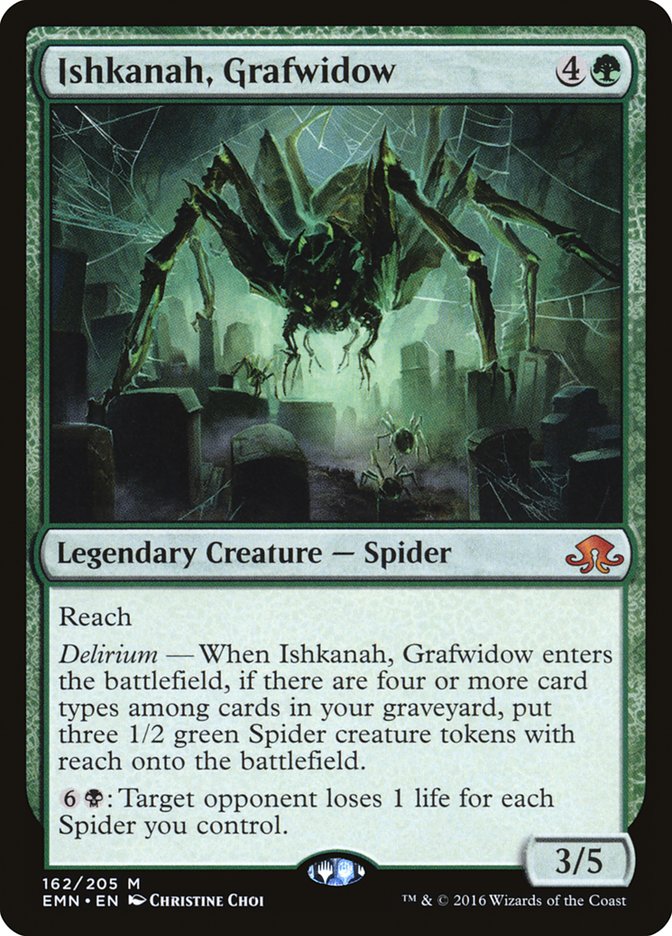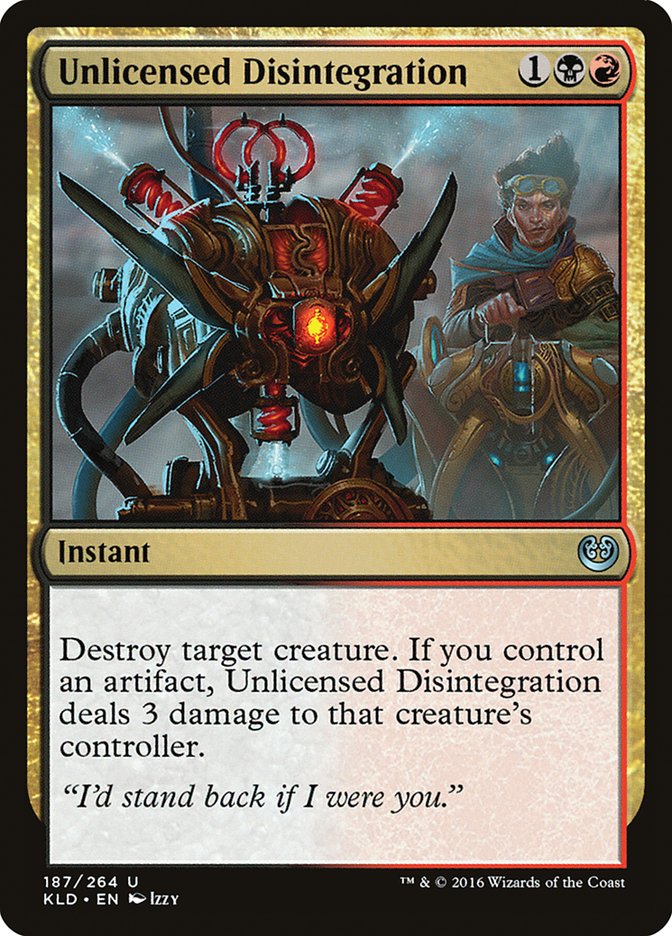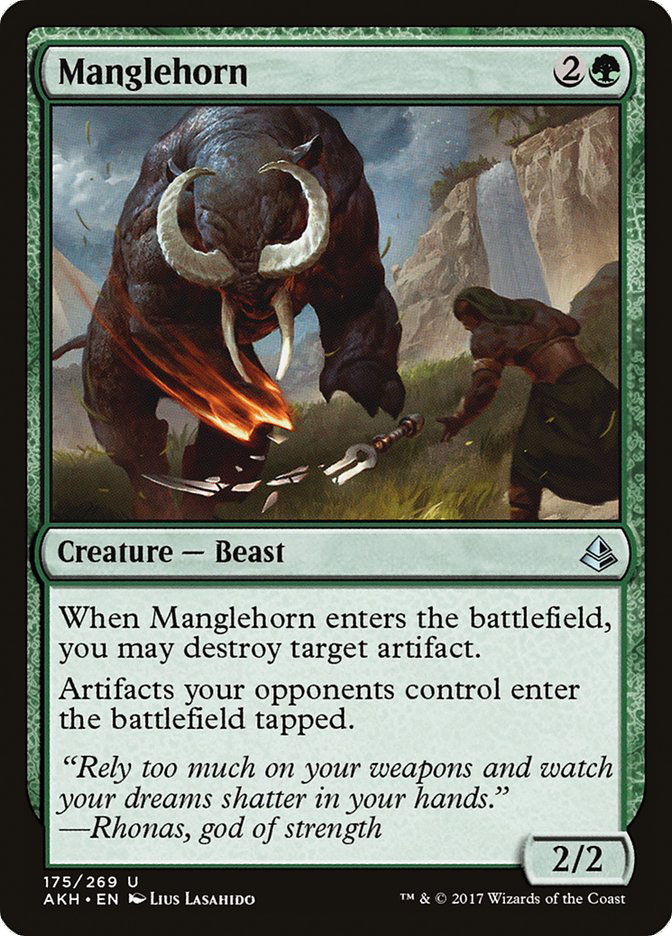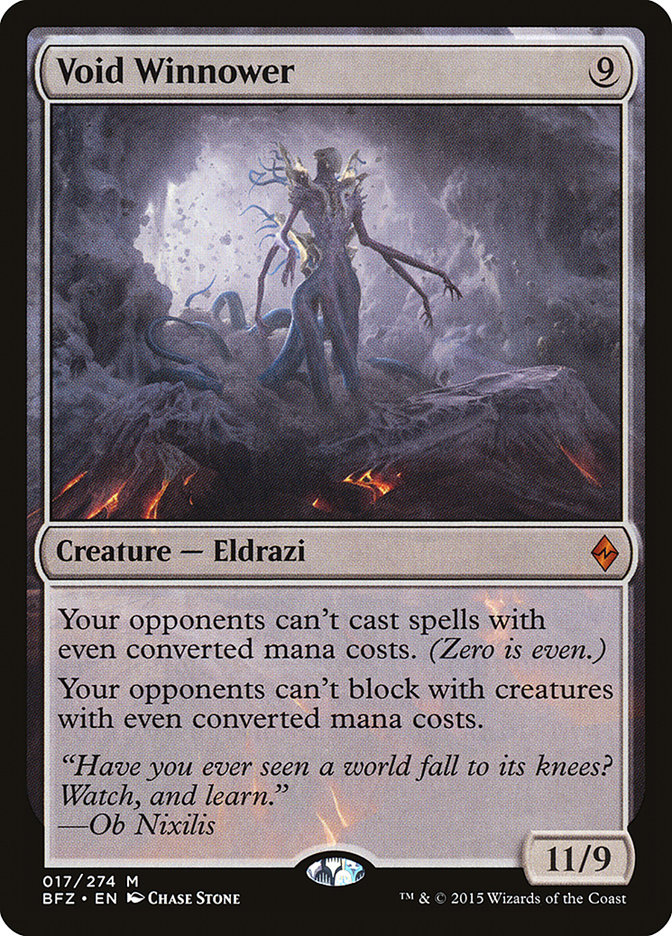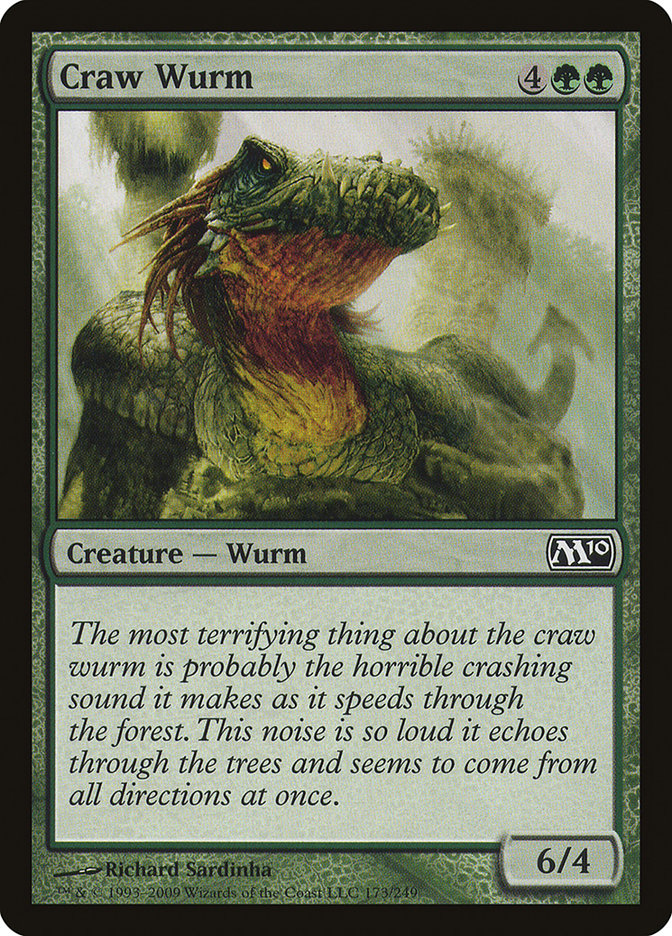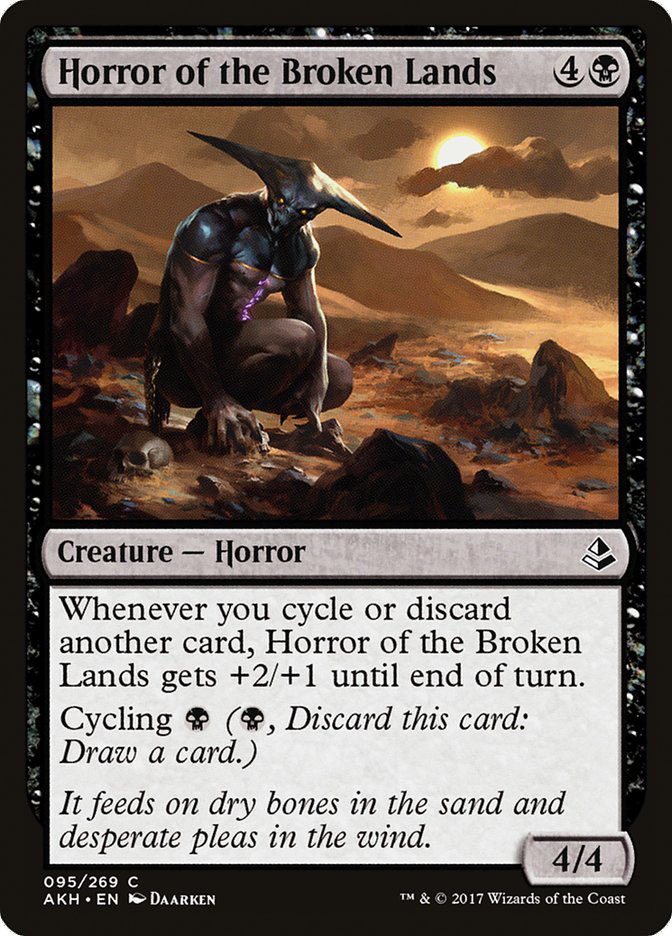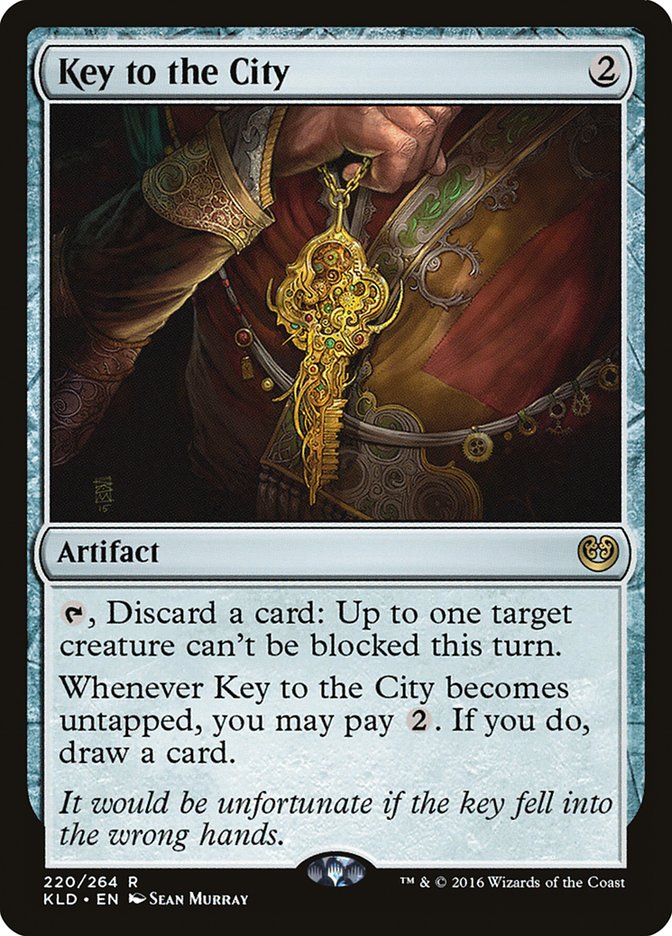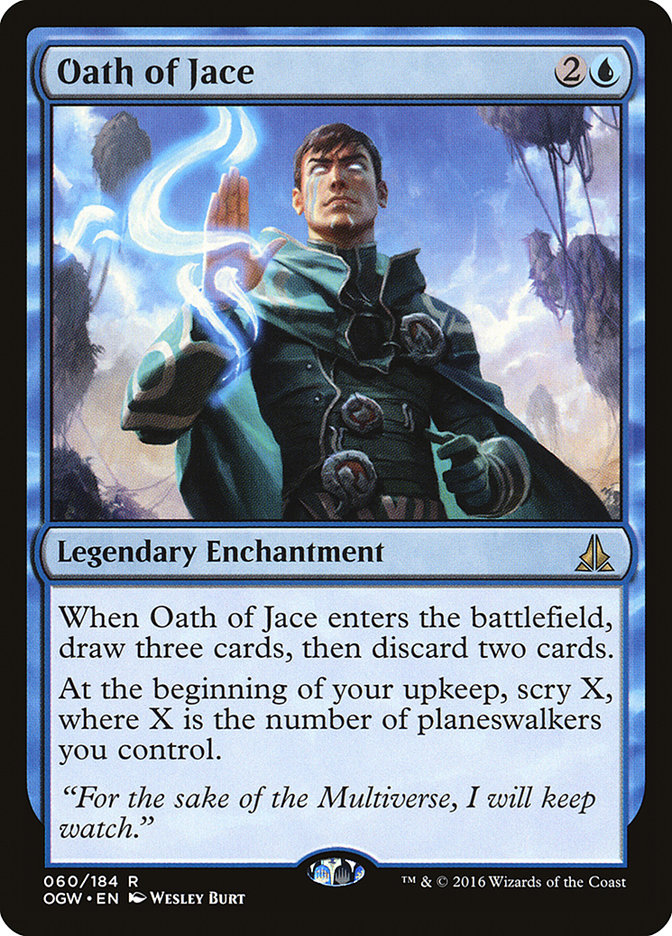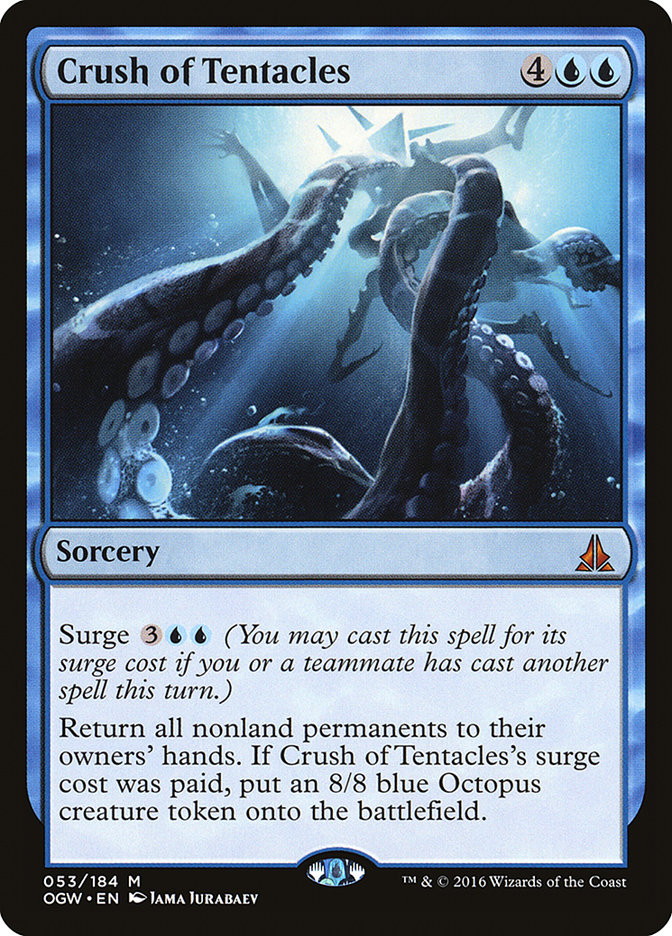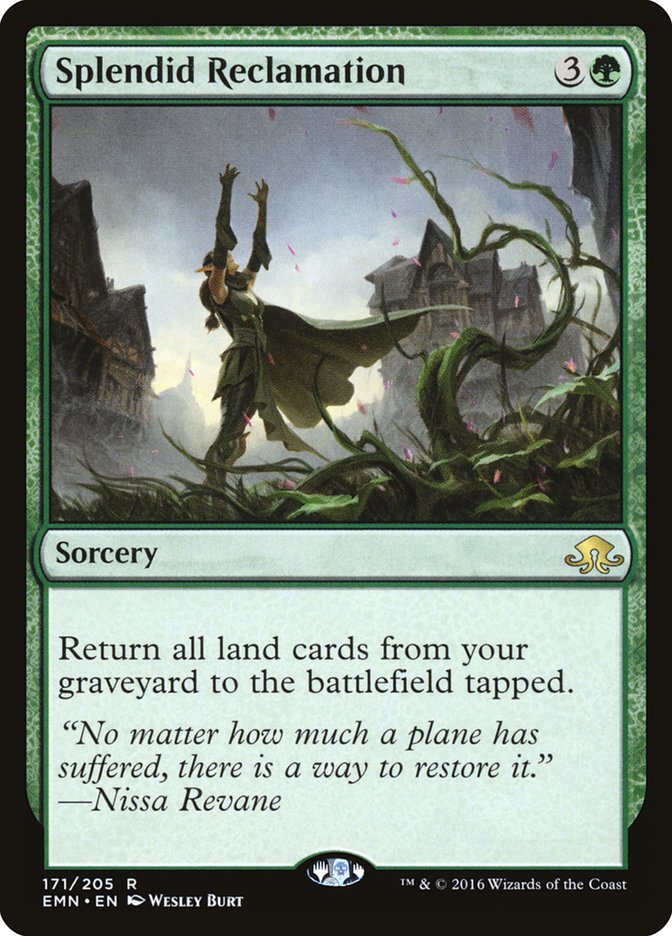How do we conceptualize the role of planeswalkers?
They tend to just be a pile of stats. If we look at Gideon, Ally of Zendikar or Chandra, Torch of Defiance, they’re just the “best” things their respective colors can be doing on the fourth turn to threaten a position that will inevitably snow ball out of control. Left unchecked, they are going to kill the opponent, whether through attacking or simply an insurmountable advantage (or emblem).
This is pretty normal; we’ve lived long enough in a world with these types of permanents to know that planeswalker on the battlefield unchecked for X number of turns equal game over.
At the end of the day, though, they’re just good cards. We don’t necessarily build our decks around them because there isn’t always incentive to do so.
Liliana, Death’s Majesty is a game-changer.
Liliana (and to some smaller extent the rest of the Amonkhet planeswalkers) is one of the first planeswalkers that I can recall that is going to actively formulate archetypes around her. (Yes, let’s please ignore the accident that is Saheeli Rai here.)
When we typically think of planeswalkers that protect themselves effectively, it tends to be in the form of small-ball tokens (which incidentally she is capable of as well), but it’s obvious that Death’s Majesty is all about her -3 ability.
Reanimator is a classic Magic archetype for good reason. The allure of cheating giant monsters onto the battlefield quickly is attractive – everyone wants to have the most dominant battlefield position, and if one can do so with flashy creatures that often are resigned to uncastable status, that’s even more appealing.
In Standard this effect is typically tied to four (or even more commonly five) mana these days. Should you cast Rise from the Grave and your opponent kills your creature, you’re left with nothing.
Have a hand full of reanimation spells but no enablers? Sift through your deck but never find your large creatures? You’re out of luck.
Yes, these examples are elementary, but it is important to emphasize just how much better having your reanimation spell tacked to a planeswalker is than a one-shot sorcery.
The floor on Liliana, Death’s Majesty is respectable:
+1: Create a 2/2 black Zombie creature token. Put the top two cards of your library into your graveyard.
Six loyalty, a creature to protect her, and some small help turning on your engine is the worst thing that can happen on a stable battlefield. This is still immensely threatening.
An understated aspect of the modern state of Standard and the movement towards play patterns dominated by planeswalkers is the strength of permanent diversification. My classic example is G/W Tokens. When one had a planeswalker, Evolutionary Leap, and creatures working in tandem, it was a borderline-impossible battlefield to beat.
The largest strength of Mardu Vehicles is its ability to produce battlefield states that involve Vehicles, sticky creatures, and planeswalkers. This is a reason the printing of a card like Cast Out is so celebrated, because it has been so difficult to contend with a properly built deck that actually forces an opponent to not only beat multiple types of cards but to be able to answer them at the appropriate times on curve.
This is why playing reactively is so difficult these days.
Liliana, Death’s Majesty creates this tension with a single card.
Even if you can answer her, there’s still (presumably) a powerful creature to beat. If you handle that, Liliana is threatening to bring it back in two short turns. Should one be interested in reanimating something like Ishkanah, Grafwidow, then turtling up behind Liliana is largely trivial, and that may result in a long-term advantage that’s impossible to beat in traditional combat.
About the only clean answer to Death’s Majesty is a powered-up Unlicensed Disintegration. That’s a very short list of cards equipped to beat a five-mana planeswalker.
Liliana is the real deal and it still appears like folks are sleeping on her. Hopefully I can spark some ideas to convince them otherwise.
First, however, I should also note that Liliana is one of the truly rare payoffs that is also just going to fit seamlessly into the top-end of decks and sideboards as a “generic powerful card.” That is the raw power that can often be oppressive about planeswalkers. We often see Nahiri, the Harbinger and Ob Nixilis Reignited in sideboards as additional threats. Liliana can play that role, too, while also likely just being a trump to other “sideboard in planeswalkers” strategies.
It’s 2017. You’re going to be playing good creatures in your decks anyway.
Creatures (13)
- 2 Tireless Tracker
- 2 Ishkanah, Grafwidow
- 1 Noxious Gearhulk
- 3 Walking Ballista
- 4 Channeler Initiate
- 1 Manglehorn
Planeswalkers (4)
Lands (24)
Spells (19)

B/G Delirium is relatively boring, but Liliana, Death’s Majesty breathes new life into how effective it is. Granted, we’ve seen her Last Hope incarnation in this deck before, and it might be easy to assume that they play similar roles. It cannot be understated how different they are in power level. Paying eight mana to return and cast Ishkanah, Grafwidow is night and day from the ability to Vessel of Nascency into Death’s Majesty and return Ishkanah on-curve.
These returns on mana are too important in a world as fast and punishing as the one we live in.
It’s true that Walking Ballista is a rare exception of playing worse with Majesty’s incarnation than Hope’s, but this version of Delirium has so much raw power at the top-end that we still just want to try to make it out alive in the early turns against aggression and Saheeli Combo. Of course, having an artifact also plays nicely with delirium.
The addition of Manglehorn also shores up this weakness to some degree; once the Beast is in your loop, Death’s Majesty can always return it to offer insurance.
This deck is very simple, but it really showcases off how powerful Liliana can be with minimal effort. As Gerry Thompson put it: “How can a midrange deck ever hope to compete with you, even if you’re just returning Tireless Tracker and making a Clue?”
Creatures (10)
Planeswalkers (3)
Lands (21)
Spells (26)

Liliana offers some clean ways to reduce Aetherworks Marvel’s fail rate. Again, she is a seamless way to make use of Vessel of Nascency in a green-based shell – flipping by an Ulamog, the Ceaseless Hunger isn’t too much of a problem if it ends up in your graveyard, ready to be reanimated.
There are actually fewer contesting moving parts than one might expect in a strategy like this as well. Tormenting Voice is still a fine card for sifting through your extraneous Marvels and large creatures to get your engine moving; it also just happens to dump your “worst draw” and turn it into a potential threat later in the game. Aetherworks Marvel itself has a high density of strong hits in this deck – Liliana can play as a proxy for the back half of Ulamog, or just be a threat by herself in addition to your ability to spike.
Ever since the banning of Emrakul, the Promised End, Aetherworks Marvel has been struggling to find an identity that functions consistently outside of just being a “turn 4 combo deck.” Perhaps Liliana will be the piece of redundancy it needed to once again be a strong contender.
It’s a bizarre world we live in where Ulamog might be considered one of the good guys.
Note: Void Winnower was near the top of my list for cards worthy of being reanimated while scouring through Standard. A potential weakness of Ulamog being brought back is being fairly vulnerable to Cast Out, which was one of my incentives to diversify slightly with World Breaker.
Creatures (19)
- 3 Bloodhall Priest
- 4 Scrapheap Scrounger
- 4 Archfiend of Ifnir
- 4 Desert Cerodon
- 4 Horror of the Broken Lands
Planeswalkers (3)
Lands (21)
Spells (17)

Is returning a Craw Wurm a respectable strategy?
This looks pretty silly, but I think it might be. All Cerodon jokes aside, Horror of the Broken Lands is actually a fairly respectable threat, especially once you begin pairing it with Key to the City.
R/B has never really been a traditional aggressive deck, lurking instead somewhere in the weird middle ground of synergistic midrange deck, and this take with Liliana just amplifies that position. Cycling creatures make for an interesting take on the archetype – your Scrapheap Scroungers should never be dead, and they make Corrupted Grafstone a respectable Magic card, which lets your curve increase.
Should you ever get into a late-game topdeck scenario, you have a low land count and you can start pulling a “Living End” impression of hard-casting your mediocre creatures. Sure, they aren’t impressive on rate, but a 6/4 is still better than an Inventor’s Apprentice.
All of this is brought together by the fact that Archfiend of Ifnir is actually a great card and your deck is pretty well-suited to beat up on creatures naturally.
This is yet another example of the range that cycling allows in Standard.
Creatures (14)
Planeswalkers (7)
Lands (24)
Spells (15)

As usual, there is a deck that is my favorite and the catalyst for this piece.
This is the most traditional take on a reanimator deck, and it’s pretty wild. Felidar Guardian naturally has synergy with Liliana – if you can ever assemble a stocked graveyard, then it is “free” to return the Guardian, blink Liliana, and get back another selection. If that second creature just happens to be Emeria Shepherd, than you have the potential to play a land and assemble the full Saheeli combo from no base.
Ambitious? Yes, but there aren’t many “bad” cards in this deck, and returning Emeria Shepherd with Liliana by itself is outrageous powerful. Even pairing the two into a Cast Out or Oath of Jace is a massive advantage that’s difficult to fight through by traditional means.
I don’t particularly like the strides I had to take with the manabase to make it appear functional, but I think it largely is. The biggest issue is actually included a sufficient number of Plains in my deck to fuel the Shepherd, but the deck should still be able to naturally curve Saheeli into Felidar Guardian a respectable amount of the time, thanks to Prophetic Prism.
You’re likely to notice that this is not the first time I’ve included cycling duals in my sideboard. Not only are these lands the perfect way to help increase your curve post-sideboard, but Irrigated Farmland is pulling almost triple duty in this deck. If I’m playing against control, I expect the games to go longer and my combo to be less effective, which makes hitting my land drops and moving towards Drake Haven appealing. They even happen to be Plains to fuel the Shepherd!
Creatures (11)
Planeswalkers (3)
Lands (23)
Spells (23)

Torrential Gearhulk is still likely the best “normal” creature in Standard, and the ability to return it is a very powerful late-game. Chapin touched on the fact earlier this week how Commit//Memory is a great tool for decks like these for filling holes, similar to Cast Out.
It’s a card that also helps this deck function a bit more like a Fish deck. It may not appear so at first glance, but this strategy is likely to take an aggressive stance in many matchups. My biggest takeaway from playing a Torrential Gearhulk deck at the last Pro Tour is how imperative it is to utilize the artifact’s massive body. Holding your short-term advantage while clocking your opponent was often the most effective strategy, and having a slew of other powerful flying “split cards” in your deck contributes to this angle of attack.
That’s it for Liliana today, but I do have a bonus decklist!
Lands (27)
Spells (33)

With the full set revealed, I was able to make a more respectable looking Crush of Tentacles deck. In some respects this is a Turbo-Fog strategy – with the full 27 lands and 33 spells, Pieces of the Puzzle and Splendid Reclamation are both fully powered, and one simply wants to stall until this massive mana engine is set up and ready to go.
It is possible that this deck wants a single copy of Approach of the Second Sun. Access to eight “free” sources through your cycling cards should be sufficient, but perhaps Lumbering Falls plus Part the Waterveil plus Crush of Tentacles is enough of a non-interactive kill condition.
The Prerelease is this weekend, the Magic Online Beta is up, and Pro Tour testing has commenced. Amonkhet is here and I’m ready to begin delving into a format that, while currently defined by Mardu Vehicles and Four-Color Saheeli, will likely prove to be very different come a few more weeks.


